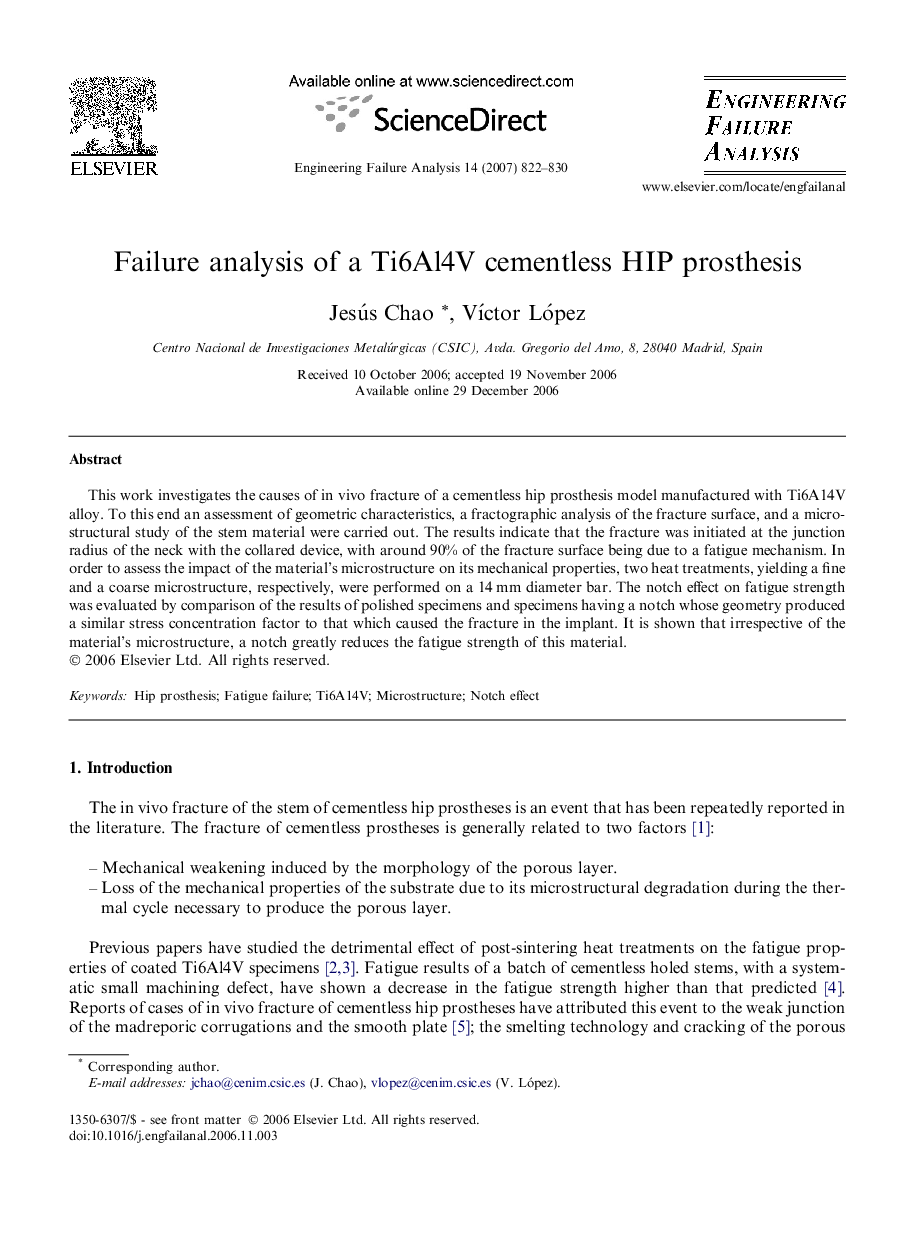| Article ID | Journal | Published Year | Pages | File Type |
|---|---|---|---|---|
| 764157 | Engineering Failure Analysis | 2007 | 9 Pages |
This work investigates the causes of in vivo fracture of a cementless hip prosthesis model manufactured with Ti6A14V alloy. To this end an assessment of geometric characteristics, a fractographic analysis of the fracture surface, and a microstructural study of the stem material were carried out. The results indicate that the fracture was initiated at the junction radius of the neck with the collared device, with around 90% of the fracture surface being due to a fatigue mechanism. In order to assess the impact of the material’s microstructure on its mechanical properties, two heat treatments, yielding a fine and a coarse microstructure, respectively, were performed on a 14 mm diameter bar. The notch effect on fatigue strength was evaluated by comparison of the results of polished specimens and specimens having a notch whose geometry produced a similar stress concentration factor to that which caused the fracture in the implant. It is shown that irrespective of the material’s microstructure, a notch greatly reduces the fatigue strength of this material.
